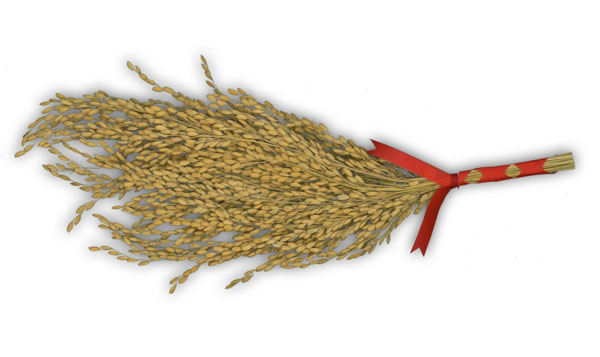
In this year’s first issue, Rice Today continues to bring together informative and inspiring stories that show the world of rice.
We look into how rice scientists and their colleagues at partner organizations work together to respond to the many challenges in the face of climate change and increasing competition for land, labor, and water. In Vietnam, scientists are working together to help farmers adapt their rice farming practices to climate change, as farmers in the Mekong Delta brace for flooding and salinity because of sea-level rise (see Appeasing ‘nine dragons’ enraged by climate change).
In his Rice facts column, Trends in global rice consumption, Dr. Sam Mohanty indicates that 2 billion more mouths will have to be fed by mid-century.
Also, rice production of two countries in West-Central Asia is featured in this issue to show success. In Turkey, sustained investment in research and extension for more than 30 years has given it the third-highest average yield in the world (see Rice booms in Turkey). Our country highlight centers on Iran, which now has the biggest area in rice production in West-Central Asia because of intensified research and training in the region.
But, it is not enough that farmers increase their harvests. In Eclipsing the sun: flatbed dryers, millions of Southeast Asian farmers are protected from postharvest losses and need not struggle with poor-quality sun-dried grain.
One of our cover stories, The state of play: genetically modified rice, examines the status of genetic modification both as a method for developing a potential product and as a tool for identifying economically important genes that can be used in conventional breeding.
As for inspiring stories, let’s name a few. Breeding a grain of life in Latin America and the Caribbean is about Dr. César Martínez and how he made his mark among rice researchers and rice farmers in Colombia and the LAC region.
Upon the 100,000th cross documents a major milestone as IRRI rolls out IR100,000. It reflects on the contribution of rice breeding in history while hailing its potential to overcome new and bigger challenges.
We also look at the importance of preparing young professionals today to be problem solvers tomorrow. In The future faces of rice science, IRRI holds its first international conference designed to educate, inspire, and motivate young scientists to become the best they can be. In the Grain of truth column, Dr. Noel Magor discusses the need to train a new generation of researchers and extension agents that can work with farmers and researchers in a “multi-actor” system.
In A city with a heart for rice, high-school teachers in highly urbanized Singapore are exposed to rice production so they can help their students appreciate and understand how their staple food is grown. Meanwhile, in the Philippines, school children learn the value of rice through The adventures of Gabby Ghas, a picture story book about a tiny grain of rice who wants to know his place in the world.
With the holidays behind us, I look forward to the start of a fresh, clean year, full of promising developments and unlimited potential. We welcome a new member of the editorial board of Rice Today, Dr. Bas Bouman—the new director of the Global Rice Science Partnership (GRiSP), the CGIAR research program on rice.
And finally, two of our cover stories (on GM rice and the 100,000th cross) have related podcasts on the newly inaugurated IRRI Radio. Here, you can also follow, throughout the first quarter of 2013, the exploits of the Rice Survivor team members that Dr. Magor mentions in his “Grain of truth.”
We hope you enjoy reading Rice Today even more as it aims to have a more global coverage of the various areas in rice research and industry.
Happy New Year!
Lanie Reyes
Rice Today editor









